The plates below are from a 1753 work called 'Collection des Animaux Quadrupèdes' which forms part of an enormous 36-volume series ('Histoire Naturelle') issued over a forty year period by Georges-Louis Leclerc, Comte de Buffon.
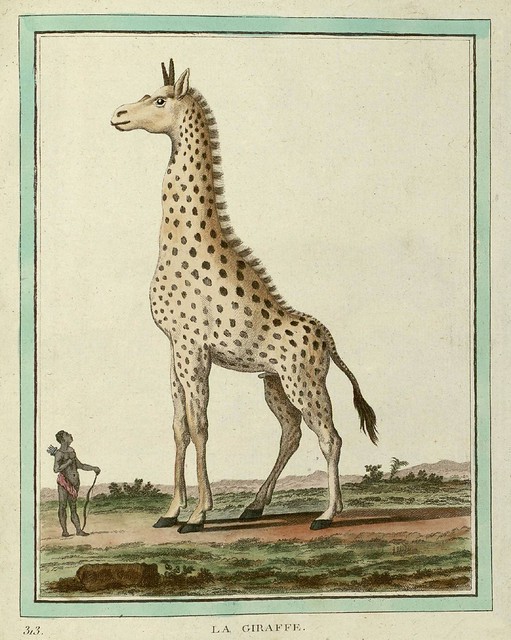
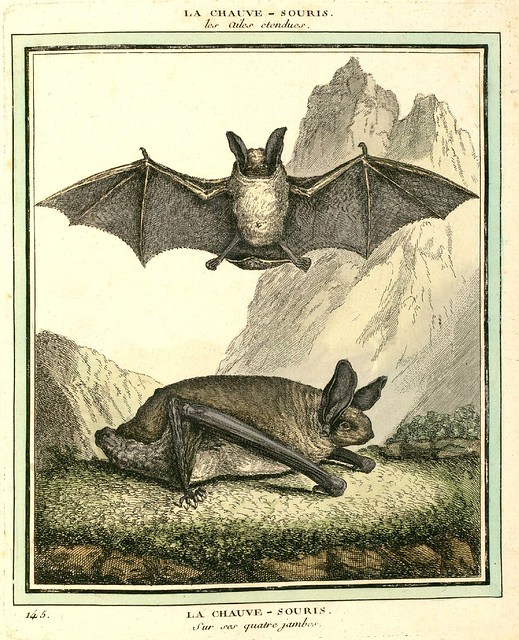

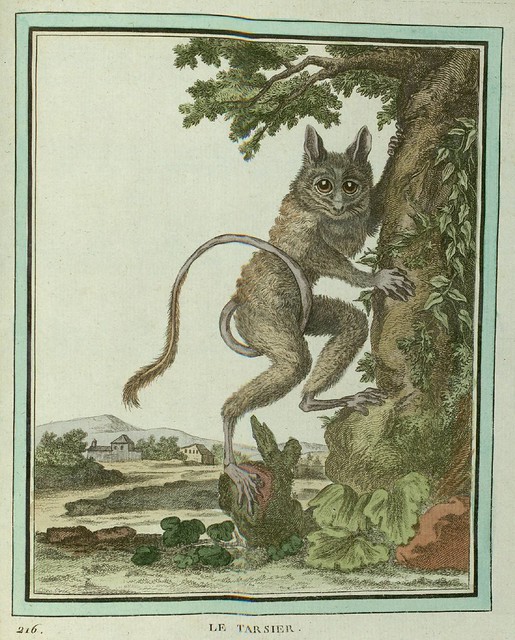
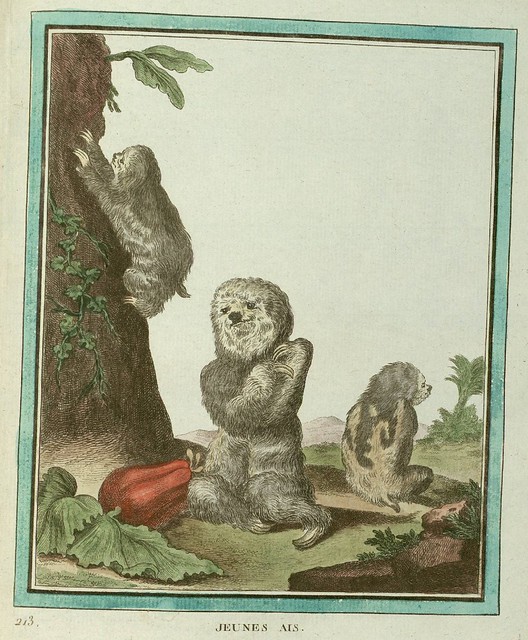


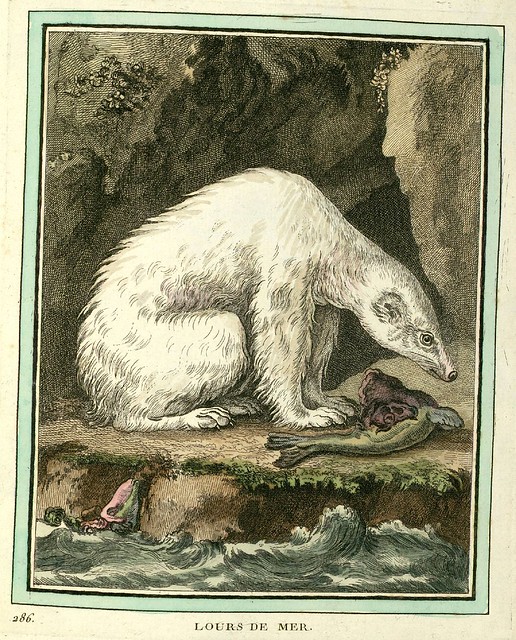
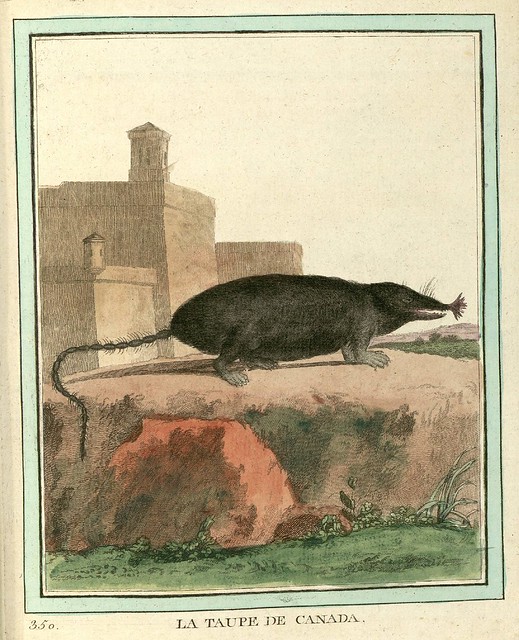
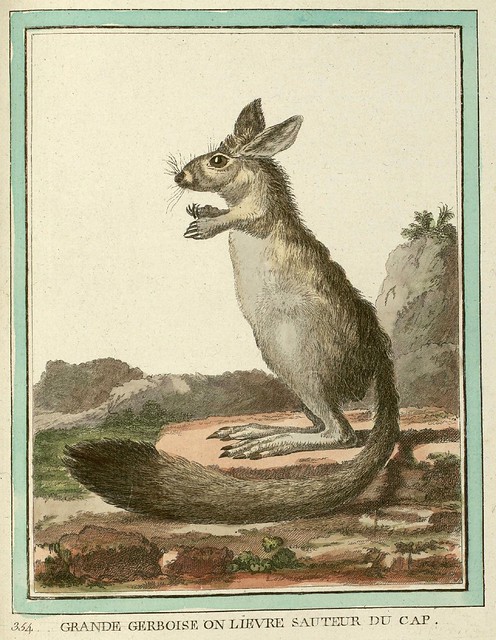
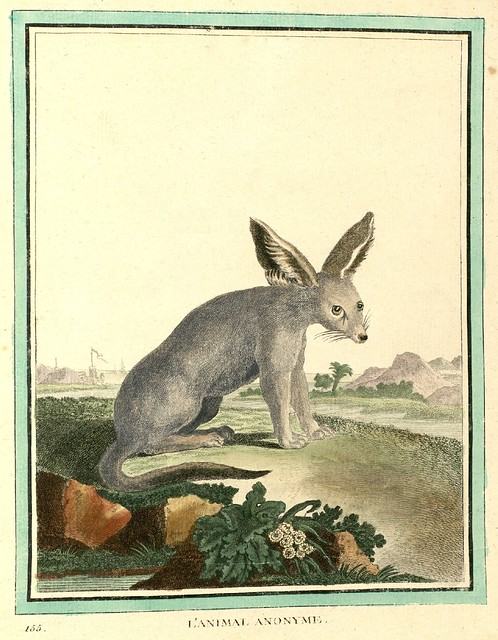


[Click through for larger versions of these moderate-to-heavily stylised hand-coloured quadruped engravings. The illustrations are slightly cropped from the full-page layout and some of the background spotting has been reduced. Mouse over for best guessed animal title. Let me know if you disagree or have a better idea. I'll probably upload a bunch more to the set on flickr during the coming week.]
"No single naturalist of the 1700s epitomizes the revolutionary changes that the Enlightenment brought to the study of nature more than Georges-Louis Leclerc, Comte de Buffon (1707-1788). In the 1600s most naturalists believed the world was a few thousand years old and that species were created separately and organized into an unchanging hierarchy, with humans positioned just below the angels. In the 1800s, Darwin described a world that was inconceivably old, one in which life gradually changed from one form to another without any need for direct supernatural intervention. Roughly midway between those two views—both chronologically and intellectually—was the remarkable Georges-Louis Leclerc Buffon.
Buffon’s career centered on a single enormous project: an encyclopedia he called Histoire Naturelle, which he planned to contain everything known in his day about the natural world. (Buffon only managed to publish 36 out of his projected 50 volumes before he died.) To create it, he was able to draw on his own astonishing expertise, which ranged from astronomy to botany, as well as the knowledge of experts he consulted. But in writing his encyclopedia he did not merely parrot the opinions of others. Instead, he tried to explain all of the facts he amassed with overarching theories about the planet and its inhabitants." [source]
- 'Collection des Animaux Quadrupèdes' is available from the magnificent University of Strasbourg digital science collection [link updated Jan 2015]. Their full-sized image files are very large and there are more than three hundred plates in this quadruped volume alone.
- The Buffon Project (en Français) -- [Translation]
- I think the University of Kyoto digital set of 'Histoire Naturelle' is complete.
- 'Buffon: A Life in Natural History' by Jacques Roger (Trans. SL Bonnefoi) 1997.
- Bio: NNDB, L&C, Wiki.
- Previously: The Concept of Mammals, The Beasts Rise, Unicorns and Other Wild Beasts & Johnston's Beasts Part II, Eye Spy (parts), Bestiarius, The Singular Thevet, Animalium Quadrupedum.



















17 comments :
Buffon was an interesting guy, for sure, responsible for making his natural history a readable thing for decently educated people--he certainly was coming close to an idea of how all of his comprehensive collectivness could be drawn together. He didn't get there, esp when it came to differentiation among humans, where he saw things in vivid black and white, or rather white and black. But as an encyclopaeist, the guy did a great job. I wanted to point out too that these beautiful images were published in at least two size formats--the one that I owned was quite small, maybe five inches tall, a pocket-book. It is always pretty extraordinary to me to find terrifically-illustrated books in tiny formats. Thanks for sharing!
Any idea what "l'animal anonyme" is? A desert fox?
Given that Buffon had a name for everything but l'animal anonyme, perhaps the creature had enrolled in an early Witness Protection program.
Wow. I really liked the bats. Thanks for posting these. :)
plate 213, Jeunes Ais, looks like Chewbacca!
The "anonymous animal" looks like a Fennec fox.
"l'animal anonyme" = bat-eared fox?
http://en.wikipedia.org/wiki/Bat-eared_Fox
Plate 213 - the first recorded gangsta pose. "Got my rind on my money and my money on my rind."
I like the eyes of the hippo.
That sloth looks pretty hip-hop.
I love "La taupe di Canada"...Are there really such long-tailed moles?
That is a big giraffe!
Love that beastly giraffe (well, giraffe-ish beast).
Leigha
The sloth reminds me of the disturbung bear creature from The Singing Ringing Tree.
The sloth reminds me of the disturbing bear creature from The Singing Ringing Tree.
These are incredible. Do you know of a similar thing done with prehistoric beasts? I love your site!!!!
VoodooToaster, that's a good question.
I think palaeontology really began in the 18th c. with Georges Cuvier but I'm not so sure he included outlandish stabs at prehistoric beast styling. It started moreso with skeletons and comparative anatomy works and it was in comparative anatomy that the subject became a serious discipline in the 19th c.
So the speculative reconstructions (eg.Sir Richard Owen) and drawings really began in the latter 19th c. [also see: Before the Deluge & there's a flickr set linked in that Exitinct Monsters post with oldy prehistoric pics].
This is definitely an incomplete list and I suppose I would ask someone like @laelaps if I wanted more specific clues as to the emergence of guestimate sketching of prehistoric beasties.
Post a Comment
Comments are all moderated so don't waste your time spamming: they will never show up.
If you include ANY links that aren't pertinent to the blog post or discussion they will be deleted and a rash will break out in your underwear.
Also: please play the ball and not the person.
Note: only a member of this blog may post a comment.